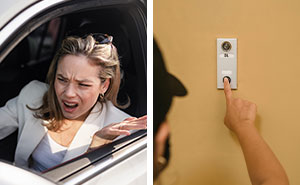Alternatively, being scared in corridors could be related to stenophobia, a fear of narrow things or places. Or the hallways themselves might not be the main issue, but the dark. The fear of dark is widely known as nyctophobia, as well as scotophobia or lygophobia. Cleveland Clinic notes that around 45% of children might have an unusually strong fear of some kind. The fear of the dark is one of the most common phobias among kids aged 6 to 12. For instance, a dark, dank hallway filled with spiders may pose various threats to people. “Spiders themselves can offer lethal bites, for example. Also, spaces that seem unhygienic may well be unhygienic and may well have vermin and other forms of vectors of disease,” the professor said. “Across our evolutionary history, we evolved fears of these kinds of stimuli as such fears helped to keep our ancestors safe.” “Someone may be afraid of a hallway, for instance, that they have to go through to get to their office, as an example. Even if the hallway truly is creepy, it would behoove that person to get over that fear,” he told Bored Panda. “There are various forms of therapy that have been shown to help with a variety of fears—someone with a crippling fear of this kind of stimulus may well benefit from therapy sessions with a highly trained professional.” In fact, some researchers argue that there are a total of four main ways that human beings respond to stress and threats. These are the well-known fight and flight (which are very decisive actions), as well as freeze, and fawn. The fight response happens when someone feels that they can overpower the threat in a direct fight. According to WebMD, some of the signs of a fight response include intense anger, grinding teeth, a tight jaw, the urge to punch or kick someone or something, crying in anger, and a burning or knotted sensation in your stomach. Your body gets flooded with adrenaline so that you can sprint away from any threats, for example, all of those nightmarish creatures crawling or glitching their way across the hallway. The signs of the flight response to threats include feeling fidgety, a restless body, constantly moving your legs or arms, and dilated and darting eyes. If you’re feeling a sense of dread, have pale skin, your heart’s pounding really quickly, and you feel stiff, heavy, cold, or numb, then you’re likely stuck in a freeze response. There’s an overwhelming sense that your primary concern is making someone else happy. In grounded terms, this would mean that you try to be excessively friendly with the source of the danger, instead of fighting them, running away, or freezing like a deer in the headlights. People who are prone to respond to stress by fawning are usually overly dependent on others’ opinions, have little to no boundaries, are vulnerable to narcissists, have barely any identity, and are generally easy to control or manipulate. Chronic stress is utterly horrible for your health. If you get freaked out by random hallways all the time, you’re only doing damage to your body, mind, and probably even relationships. You could also do mental calculations, visualize yourself overcoming your fears, focus on your breathing, or remind yourself that you are—in fact—safe. What’s the scariest hallway that you’ve ever personally seen? Let us know what you think in the comments. Oh, and we hope any corridors you walk down today are well-lit and definitely not haunted. Follow Bored Panda on Google News! Follow us on Flipboard.com/@boredpanda! Please use high-res photos without watermarks Ooops! Your image is too large, maximum file size is 8 MB.

































































































































































